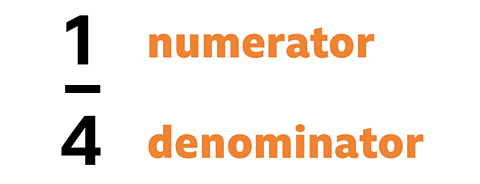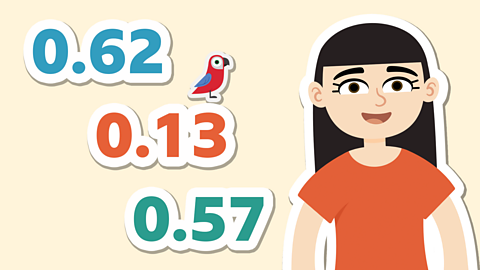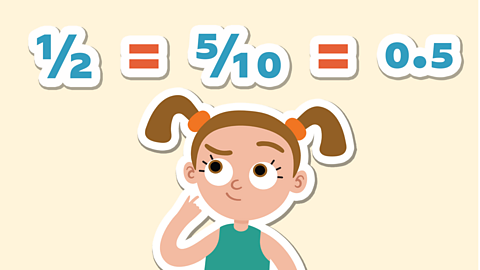Fractions on a number line
Using a number line to show fractions can be a very helpful way to represent how a whole is divided equally into parts.
Remember, the denominator shows us how many parts there are in total and the numerator tells us how many parts we are talking about.


A number line is a great way of seeing the order that fractions go in and allows us to compare fractions.
It works in the exact same way as a normal number line, but the numerators are the numbers that increase or decrease, while the denominators stay exactly the same.

Example 1
Look at this number line. It starts at 0 and ends at 1, which represents the whole.

Do you notice how it is split into 5 parts?
That means our denominator must be 5. The numerators should go up in a consecutive order (one after each other).
This is what the fractions would look like when marked on the number line.

Now we can easily compare the fractions.
Which fraction is bigger \( \frac{4}{5} \) or \( \frac{1}{5} \)?
If we look at the number line, we can clearly see that \( \frac{4}{5} \) is the larger fraction since it is closer to 1.
Example 2
This number line has been split into eighths since there are eight parts, but we have a fraction missing.

What fraction needs to be marked on the number line?
The easiest way to work it out is by looking at the numerators. Since we know that the numerators have to go up in consecutive order, we simply have to think about which number comes between 4 and 6.
It is 5. Therefore the missing fraction is \( \frac{5}{8} \).

Example 3
Take a look at this number line. The denominators are missing as well as some of the fractions.

To work out the denominators, we have to count how many parts the number line has been separated into.
There are 10 parts so the denominator must be 10.

Now let’s look at which consecutive numbers are missing and fill in the gaps.

Did you work out the answers? \( \frac{3}{10} \), \( \frac{7}{10} \) and \( \frac{9}{10} \) are the missing fractions.
Activity
Quiz
Practise what you've learnt about placing fractions on a number line with this quiz.
NEW! Play Guardians: Defenders of Mathematica - the Halloween update. gameNEW! Play Guardians: Defenders of Mathematica - the Halloween update
Experience Mathematica as you’ve never seen it before, with all-new backgrounds and costumes for Halloween. Available for a limited time only. Use your maths skills to save the day before it's too late!

More on Fractions
Find out more by working through a topic
- count10 of 26

- count11 of 26

- count12 of 26

- count13 of 26
